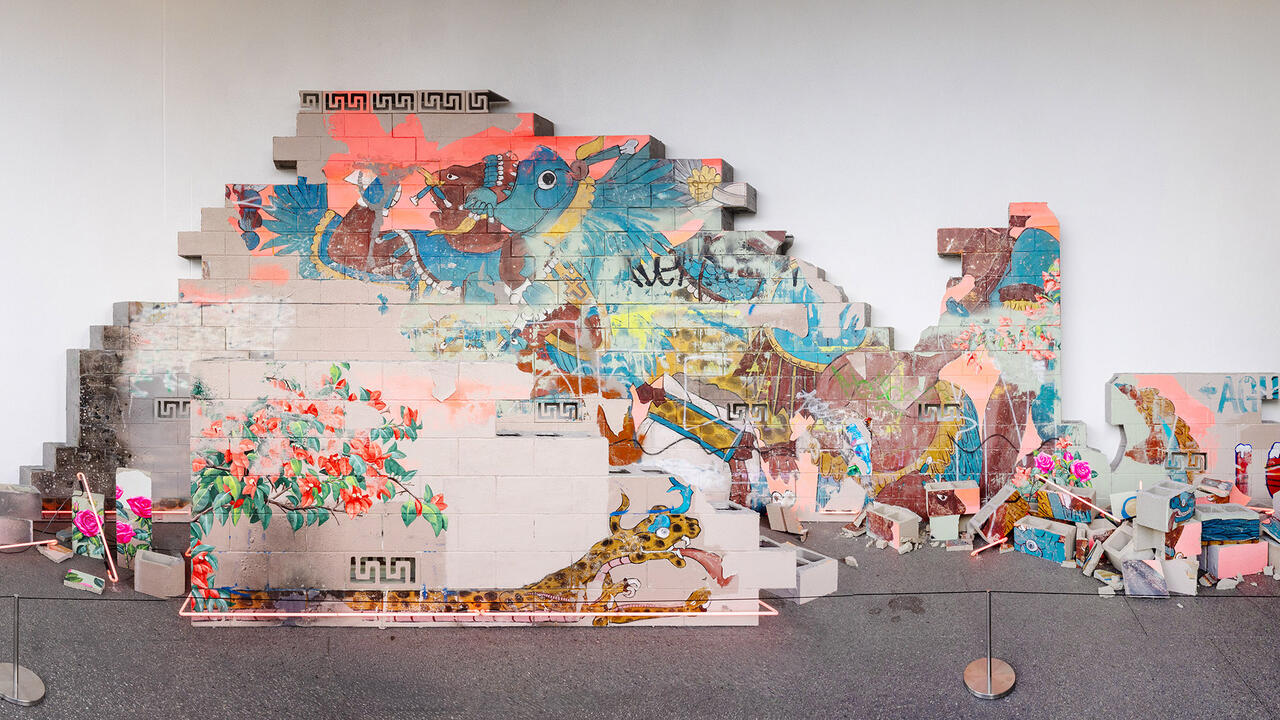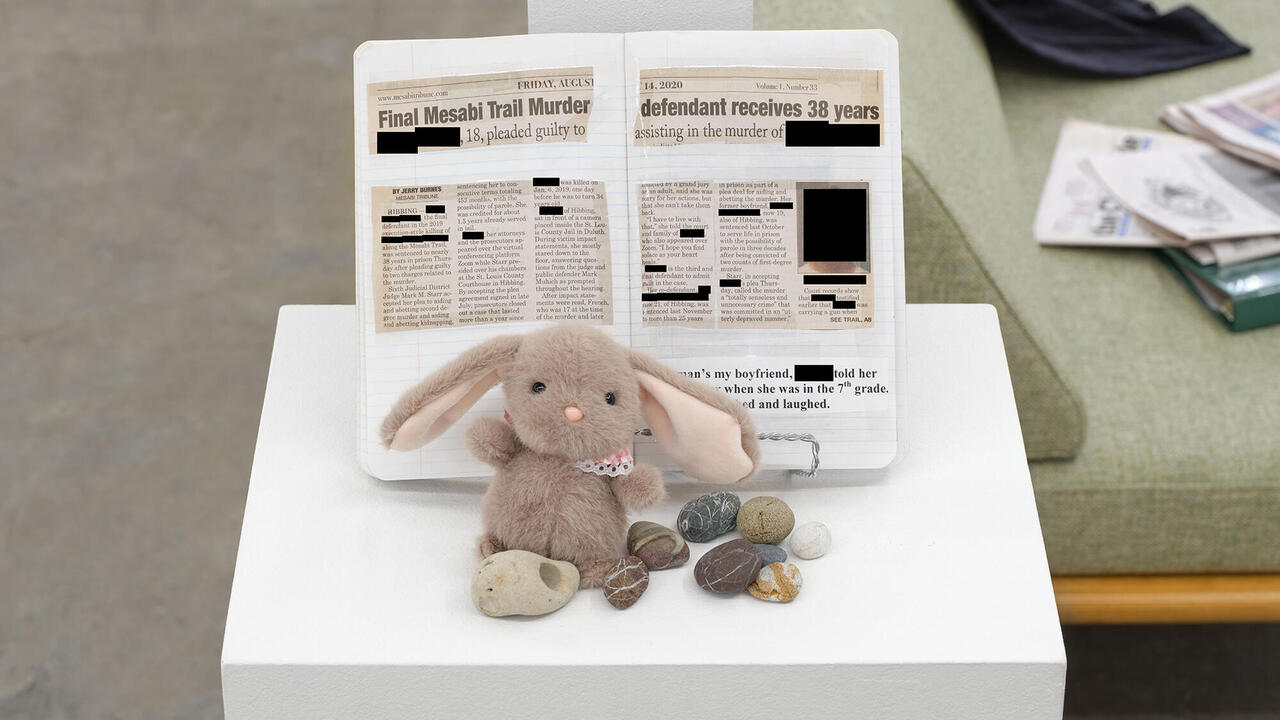Michael E. Smith
Michael Benevento, Los Angeles, USA
Michael Benevento, Los Angeles, USA

Slashing the back wall of a dark room at Michael Benevento is the shape of what used to be called ‘the number sign’. If you whip out your smartphone to take a flash photo for your Instagram feed, or simply to use its torch function to view the work better, the relief jumps into soft-core clarity; the hashtag form appears sculpted from something like bloody stool. Smith has a rare ability to do a lot with a little: attracting and repulsing viewers by dimming rooms and adding garish fluorescents; cutting off the gallery’s circulation by blocking the hall with a glass-topped patio table overturned on a shellacked blowfish; or, right at the entrance, opening a door onto a grungy, carpeted lobby, where one of his signature assemblages sits – a hacked-up bicycle frame resting on a disposable nappy (all works Untitled, 2017). The scrap bike is upsetting enough; the scrap room is something else entirely.

The work here follows a pared-down, punk version of Jasper Johns’s formula: one thing plus another thing equals art. Smith strives to induce the greatest revulsion from the smallest gesture, and sleazing up a white cube’s back end proves to be an efficient method. The skylight of another room is obscured by a fleece blanket patterned with leaping Super Marios. By day, the gallery takes on a pale-blue cast; it could almost be cosy, except that those cut-rate blankets evoke both 64-bit teenage escapism and the soiled
bedding of the homeless, camped just two blocks east of the gallery. On the floor beneath the skylight are two vinyl, 3D models, printed from CAT scans of dogs with brain tumours. It’s hard to miss the joke – the combine is a little too Dr Seussian to be surrealist – but Smith’s pun is only one dry indignity. For the other: one of the heads rests on a nappy.

The white, skull-like sculptures have the appearance both of inanimate objects and actual corpses; indeed, they index the deaths of real dogs. But the prints do not distinguish between the scan’s info and noise: their masses incorporate skin, fur, brain and tumour alike; meaningless, globular artefacts bleed out like tailings from a cast. The morbid sensation they transmit, in galleries lit like horror-film hospitals, carries over to the readymades. In a corner across from the heads, another overturned patio table rests on a
blowfish; legs up, it seems dead.

In his reduction of Johns’s equation, Smith manages to shove a caesura between thing and thing, so that the art is more than the sum of its parts. For another work, Smith has scooted all the gallery’s office computers onto one of two desks and bracketed the remaining one with raccoon paws: two on each end, like quotation marks. Running the length of the workable desk, as well as coiled on a nail in the bathroom, are thin plastic tubes stuffed with dead bees, which – in case you’ve been distracted by other tragedies – are quietly heading towards extinction. A photograph can’t quite capture the sculptures’ dead and dying looks. On the show’s opening night, a bucket of deflated white balloons sat in the gallery’s asphalt backyard. Visitors could blow them up and set them free; bobbing around the car park like stray cats, their round, pale forms served as a reminder of those CAT-scanned dogs. It was a celebration, but with an expiration date: we’ve all seen what happens to balloons in the sun.
Main image: Michael E. Smith, Untitled (detail), 2017, video still. Courtesy: the artist and Michael Benevento, Los Angeles





















